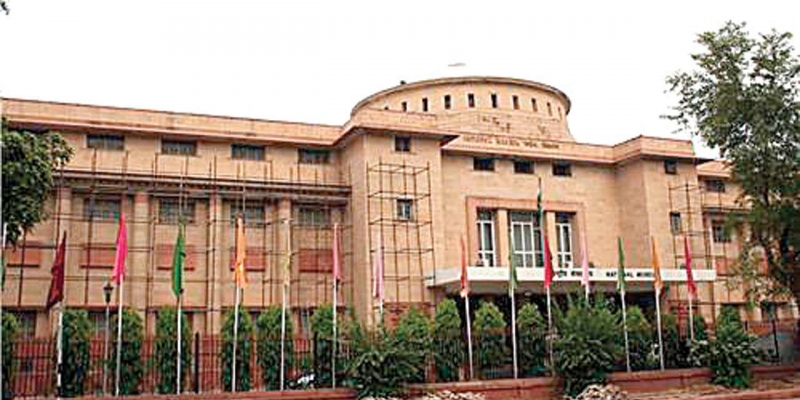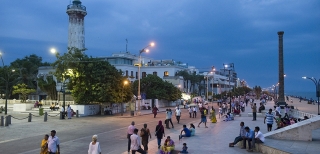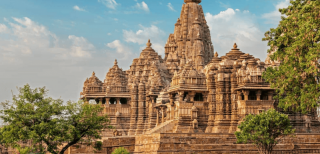Explore the Magnificence of India by Visiting these Top 5 Museums of the Country
Discover a cultural journey through India's rich heritage! Discover the top 5 museums showcasing the India’s magnificence. Immerse yourself in history, art, and tradition like never before. Plan your visit today to India. Know more
There are not many people in this world who’re not aware of India’s rich culture and royal backdrops which can still be witnessed in its numerous monuments and artifacts.
Best Museums in India:
1. NATIONAL MUSEUM, DELHI
Located on Janpath, New Delhi, National Museum is claimed to be the largest museum of India. The museum takes you on a time travel to the incredible history of India and its heritage. It has an amazing collection, from the Harappa, Mohenjo Daro civilizations to modern-day exhibitions, truly outstanding!
The museum has over 2 Lacs art objects representing 5000 years of Indian art and craftsmanship. Pottery, seals, jewelry, tools and a complete grave with a female skeleton wearing bangles from Mohenjo-Daro excavation sites are splendid! Take at least 5-6 hours to visit this museum.
2. THE PRINCE OF WALES MUSEUM, MUMBAI
The Prince of Wales museum or Chhatrapati Shivaji Maharaj Vastu Sangrahalaya is the 20th-century museum in Mumbai. This museum was constructed to honor the visit of Prince of Wales, Edward VIII and from this, the museum got its name.
The building of the museum is made using Indo-Saracenic architecture. The museum has an orchard of flowers and palm trees. The museum has more than 50,000 displays of ancient India and from other parts of the country. The museum is divided into three sections- National history, art, and archaeology. The museum contains artifacts from Indus Valley civilization, Mauryas, Guptas, Chalukya, and other reigns.
The building was constructed using stone and basalt. The building is rectangular in shape and is built in Indo-Saracenic style. You’ll notice an entrance portico, elevated dome, and cluster of pinnacles. The interior of the building is built in 18th-century style. The museum has a library, seminar room, exhibition hall, and conservation studio that were built a few decades ago.
3. SALAR JUNG MUSEUM, HYDERABAD
This museum is the third largest museum in India, and it holds a wider collection of ancient manuscripts, ceramics, metallic objects, rugs, statuaries, textiles, paintings, and clocks. Most of the articles prized in this museum belong to various Indian civilizations. Daggers belonging to Empress Noor Jahan, Emperor Jehangir, and Emperor Shah Jahan are among the important historical antiques found in the museum.
Besides having the thirty-eight galleries featuring precious artifacts, the museum also has a library, cafeteria, sales counter, and a reading area. The Salar Jung Museum is one of the most visited tourist attractions in Hyderabad and it receives about ten lakh visitors every year.
# Indian Museum, Calcutta
Indian Museum, in Calcutta, one of the oldest museums in India; its collections depict the cultural history of India from prehistoric to the Muslim era. The present structure, inaugurated in 1875, is made up of sections devoted to geology, zoology, industry, archaeology, art, and ethnology. The coin room has the largest collection of Indian coins in the world.
The gallery exhibits examples of Persian and Indian paintings, and the geological section is the largest in Asia and one of the most significant in the world. There is a huge collection of statues and bronzes from different Asian civilizations, including life-size models of people and animals from various sections of India.
# The Calico Museum of Textiles, Ahmedabad
THE CALICO MUSEUM of Textile is one of the biggest textile museums and a prestigious institute in Indian textiles around the world. Its great collection of fabrics from varied and remote regions of India demonstrates handicraft textiles across 500 years. The textiles were composed with an objective to conserve, raise awareness and empower the vast and deep textile heritage of India. Over the years the collection has expanded into an amazing source of fabrics based on colors, pattern, weave, and enhancement and has become a recognized center providing Indian and international scholars an opportunity to study and draw in-depth knowledge on this extraordinary range of Indian ethos.
In the year of 1949, Gautam Sarabhai and his sister Gita Sarabhai laid the foundation of this incredible museum that solves the minutiae of the country’s textiles. Then-Prime Minister of India, Jawaharlal Lal Nehru inducted the famed museum in 1949. Primarily set in the Calico Mills, the museum got a new place in 1983 when it was shifted to Sarabhai House in Shahibaug.









